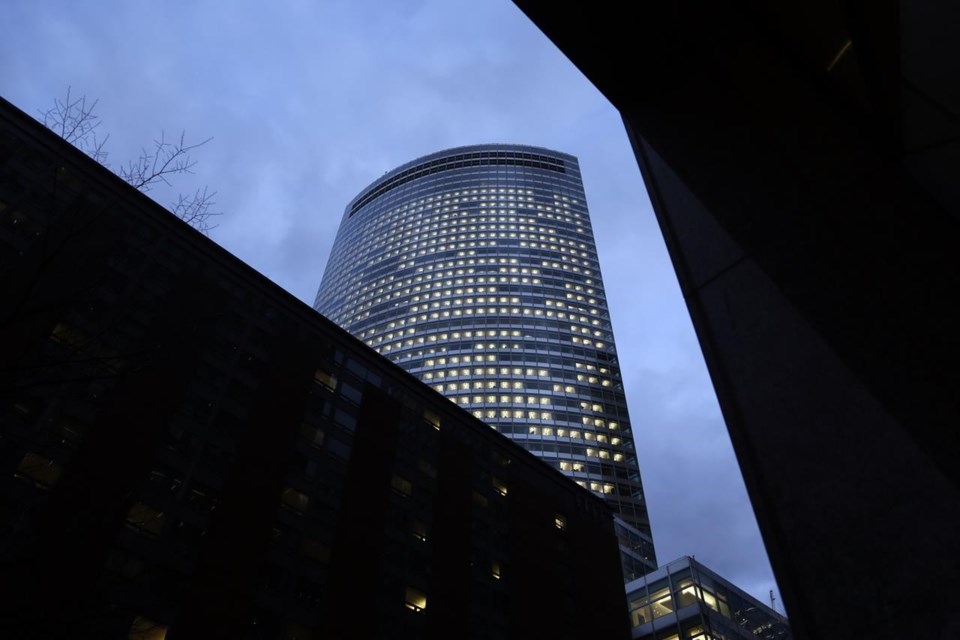NEW YORK (AP) — Goldman Sachs no longer wants to be the bank for everyone.
The storied investment bank spent eight years attempting to expand its business beyond corporations and the wealthy. But in recent months, Goldman has signaled a partial retreat from those efforts by scrapping plans for a checking account broadly available to the public and mothballing its personal loan business. A popular savings account and a credit card business survive for now.
Last week, the bank disclosed that it had accumulated $3 billion in losses in its consumer banking franchise since 2020, mostly money set aside to cover potential loan losses in its consumer lending businesses. Bank regulators are reportedly looking into whether the consumer business had proper safeguards in place as it grew larger.
The retreat in consumer banking comes as Goldman tries to refocus on its roots: advising corporations on deals, investing, and trading, and servicing the well-to-do. The firm's revenue from investment banking, trading and wealth management made up two thirds of total revenue last year.
“I think it became clear to us early in 2022 that we were doing too much, it was affecting our execution,” said David Solomon, Goldman’s chairman and CEO, in a call with analysts when the bank reported its results earlier this month.
Goldman’s push into consumer banking was one of the biggest changes in the firm’s 154-year history. The investment bank had to legally convert itself into a bank holding company in 2008 during the financial crisis to get access to the Federal Reserve’s emergency funding operations. That led to jokes within the industry that the Wall Street titan Goldman Sachs was going to issue something as commonplace as an ATM card.
The jokes became a reality when Goldman bought the assets of GE Capital and launched its online only savings account providing an above market interest rate. The savings account became an unexpected hit for Goldman, with waiting lists forming after its initial launch both in the U.S. and later in the U.K.
The online savings account is not going away, and is considered an asset by the firm, Solomon told investors. The firm now holds more than $100 billion in retail deposits, which is a cheap form of capital for the investment bank that historically hasn’t had access to such forms of financing.
The personal loan business, launched with great fanfare in 2016 with a broad advertising campaign under the brand Marcus, has been a trouble spot for the bank. Goldman Sachs executives acknowledged at the time of the launch that the Marcus brand was created to give Goldman — with its veneer of being a powerbroker between Washington and Wall Street — a much more friendly and reachable edge.
The unsecured personal loans, largely used by customers to consolidate credit card debt, became a burden during the coronavirus pandemic when millions of Americans could no longer pay their bills. The bank set aside billions of dollars to cover potentially bad loans and, unlike other big banks that were able to release those reserves in 2021 and 2022, Goldman largely had to keep adding to its reserves. New accounting standards that have required banks to model potential loan losses more aggressively also contributed to the decision to wind down the personal loan business.
The large losses have caught the attention of bank regulators, which have also been looking into Goldman’s personal lending operations. The Wall Street Journal reported Friday that the Fed is investigating whether the firm had adequate safeguards around its personal loan business as it ramped up its lending.
“The Federal Reserve is our primary federal bank regulator and we do not comment on the accuracy or inaccuracy of matters relating to discussions with them,” a Goldman Sachs spokesperson said.
Investors have long questioned the need for Goldman to go into consumer lending. The bank kept the consumer banking operation under the umbrella of its wealth management division in its quarterly results, leading to criticism that Goldman was hiding Marcus’ losses from its investors.
“We have never understood the desire of (Goldman) to expand so much in consumer given such strength of its 150-year-old legacy franchise in capital markets,” wrote Mike Mayo, a long-time banking industry analyst with Wells Fargo Securities, in a note to investors.
One area Goldman isn’t retreating from is its relatively new credit card business, which the firm calls platform solutions. The firm is underwriter for the Apple Card, the popular credit card deeply embedded into Apple Pay that launched in 2019, as well as a co-brand credit card with General Motors. Goldman and Apple announced in October that they were extending their relationship until the end of the decade. Platform solutions also includes GreenSky, a fintech lender focused on home improvement loans, which the bank bought in 2021.
While the Apple Card and GM Card were major gets for Goldman, the new business has not been without its headaches for the firm.
The bank disclosed in August that the Consumer Financial Protection Bureau, the nation’s financial watchdog was investigating its managing of credit card accounts, including issues with billing, credit reporting, dispute resolution and other routine credit card issues.
Ken Sweet, The Associated Press



